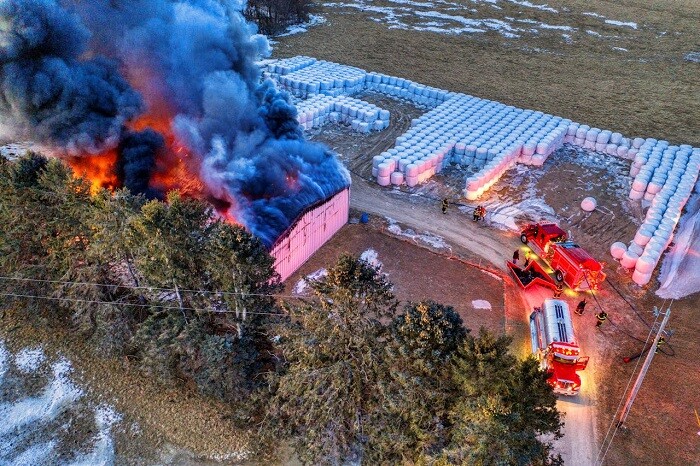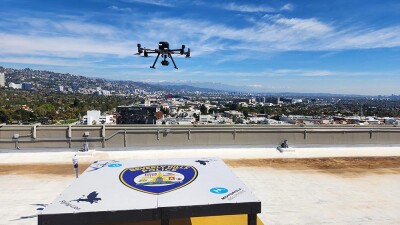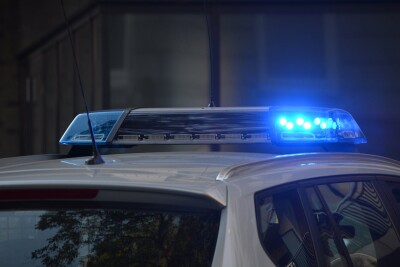Public safety organizations around the world are increasingly implementing “Drone as a First Responder” programs, also known as “DFR.” Whether deployed for firefighting, search and rescue, natural disaster response, or another public safety operations, DFR programs have repeatedly demonstrated how they can increase accuracy, efficiency, and safety.
As defined by UAV Coach, DFR programs are “initiatives in which police departments use a drone to respond to an emergency call right when it happens, deploying the drone to the scene of the call.” In many DFR programs, drones are placed at locations throughout a city or town, and they can be quickly deployed to areas where an emergency or disaster is taking place. Once on the scene, the drones can provide real-time information—often including live video—to enable emergency personnel to deploy the appropriate personnel and equipment.
Given the many advantages of DFR systems, many have advocated for increased adoption in public safety, emergency response, and law enforcement. Writing in Police 1, Noreen Charlton, Sr. Manager Public Safety Marketing for Skydio, stated that, “At scale, DFR programs will be one of the most positive and impactful technology-driven changes to the safety of our cities ever.” She explained that organizations with drone initiatives “report 20%-30% of calls being resolved without needing to send an officer when a drone arrives first,” which increases efficiency and keeps personnel safe. Moreover, she said that drone programs enable faster response times, increase transparency of public safety operations, and can cut down on the use of force.
Despite these advantages, Charlton stated that fewer than 10% of the approximately 18,000 law enforcement agencies in the US have a drone-based program. Fortunately, the number of public safety programs in the US—and around the world—adopting DFR efforts is growing quickly.
Here are some recent examples:
- In California, the Elk Grove Police Department announced plans to add three aerial drones to its DFR program. A news report stated that the new vehicles “will amplify officers’ ability to respond to live 911-operator dispatch calls and send necessary resources to a scene for service, enabling staff to locate, report and track suspects and vehicles involved in ongoing crimes.”
- A regional DFR effort has begun in North Carolina. There, agencies in New Hanover and Brunswick counties have come together to use drones equipped with 6K cameras to monitor traffic accidents and crime scenes, thermal drones to aid with fire calls and search and rescue, and smaller indoor drones to give officers outside an emergency area “a glimpse of what the scene looks like” before going in.
- The Champaign, Illinois Police Department has also started a drone program “to support community safety efforts from an aerial perspective.” According to reports, city officials The program is designed to help public safety officials “quickly search for missing persons, photograph crime scenes and traffic crashes with speed and accuracy and promote the safety of the community and police personnel.” Significantly, the department requires all officers to complete flight training and receive FAA Part 107 certification before joining the drone program. Also, the department has created a dedicated webpage to “promote transparency on UAS technology and its use in the community.”
These are just a few of many examples of public safety groups and law enforcement organizations adopting uncrewed systems. More are surely on the way, as market analysis groups predict strong growth in the drones for public safety market.
According to a recent Reliable Market Forecast report, the overall public safety drone market is expected to grow at a rate of 11.7% between 2024 and 2031. Drilling down by region, the report states that growth in North America is “driven by the presence of key drone manufacturers and favorable government regulations,” market development in the Asia-Pacific region and Latin America has been prodded by significant government investment, and public safety drone sector expansion in the Middle East and Africa has been led by a need to address natural disasters and security threats.
In Europe, according to UASolutions, the public safety drone market “is expected to develop at a 12.1% compound annual growth rate” between 2023 and 2030. The group asserts that safety laws and technical standards contained in the European Union’s Drone Strategy 2.0 are leading to greater deployment of drones for search and rescue, first aid, traffic accident reconstruction, and aid to firefighters.
Watch Commercial UAV News for regular updates on the use of uncrewed systems in public safety and emergency services.















Comments